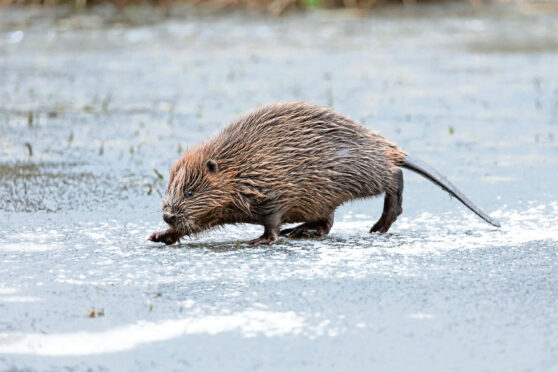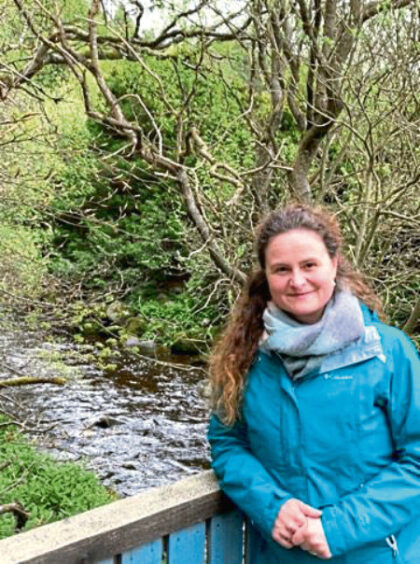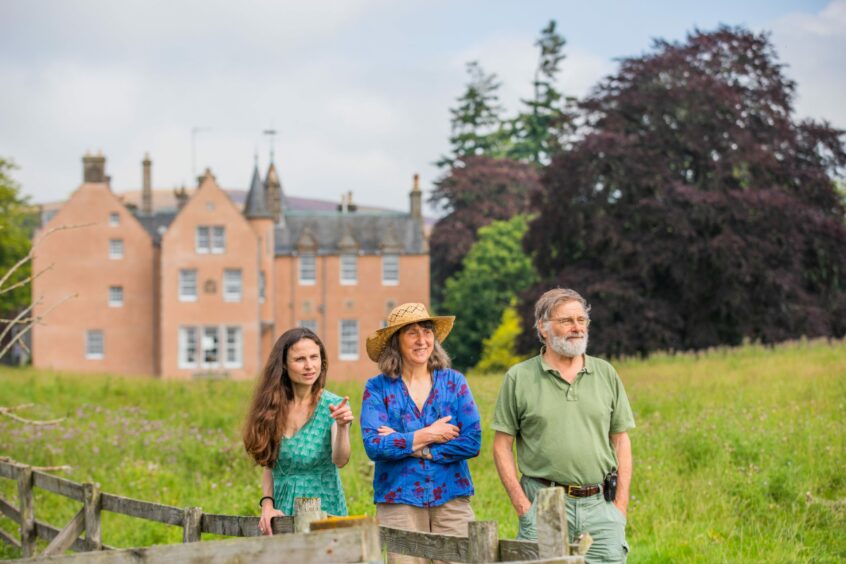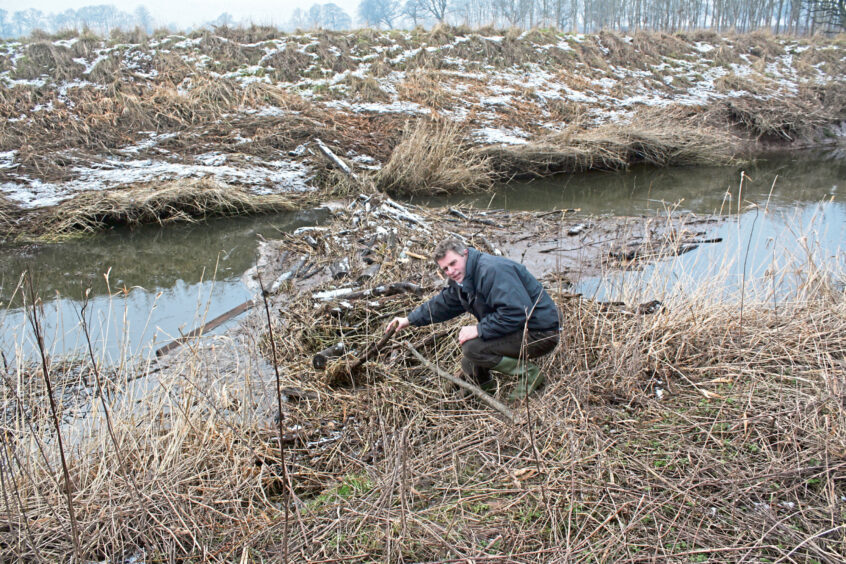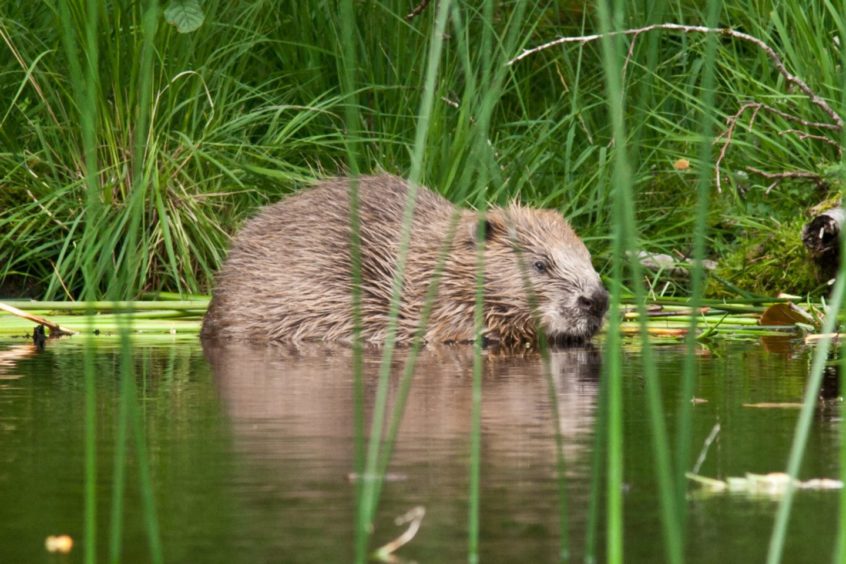For a region like Tayside, where agriculture plays a key part and the topography is dominated by a river, the issue of reintroducing beavers into the wild was always going to be contentious.
On one side there are the farmers who report being thousands of pounds out of pocket due to damage to their land caused by the semi-aquatic rodents.
Meanwhile, conservationists, ecotourism providers and various rewilding initiatives oppose the culling of beavers and point to the benefits these animals bring to the wider ecosystem.
New evidence
Four centuries after they were hunted to extinction, mainly for their fur, beavers are back in Scotland and their numbers are growing.
Until now, research and data on their impact on the landscape has been rather scattered.
Now a new report produced by scientists at Aberdeen University – one of the biggest of its kind, collating evidence from 120 studies of beaver populations worldwide – has pointed to definite advantages of the reintroduction of beavers.
NatureScot report
The evidence shows beavers could be beneficial in improving the condition of Scotland’s rivers, including helping to improve water quality, limiting the effects of drought and improving river ecosystems.
The report, commissioned by NatureScot, Scotland’s public body responsible for natural heritage, will be used to help policymakers consider the benefits and limitations of beaver expansion in Scotland, including where trade-offs are required.
It comes hot on the heels of a Scottish Government announcement late last year stating it would “actively support” the expansion of the beaver population, promoting translocation.
This would involve safely trapping beavers in problematic areas and moving them to a more suitable area rather than shooting them.
Dr Josie Geris, a senior lecturer in Hydrology at Aberdeen University, led the study.
A graduate of Earth Sciences at VU University Amsterdam, Dr Geris went on to complete an MSc in EcoHydrology, before moving to Newcastle for her PhD in Civil Engineering and Geosciences.
Since 2012, she has been building an academic career at Aberdeen University’s Northern Rivers Institute.
A general consensus
“There was already some knowledge about the advantages beavers bring, especially on the ecological aspects, but what was less known was the effect on physical aspects of our land including water supply and quantity,” says Dr Geris.
“The effects of beaver populations can be quite site-specific and there is a lot of contrasting evidence and anecdotal evidence, which isn’t always accurate. This isn’t helpful in the debate and the interactions with landowners.
“So what we did was to collate evidence and establish a general consensus from this evidence.
Healthy ecosystems
Also, we were able to attach levels of confidence to different aspects of the general consensus – some things we were really confident of, and for some things we thought we may need some further research.”
Among the points Dr Geris’s team is confident about is that beavers promote healthy ecosystems in wetlands, and their dams are able to trap contaminants and pollutants, keeping them out of the water supply and atmosphere.
Beavers also hold water back in the landscape, meaning it is stored and becomes available at a later date, when there are drier periods.
Climate change
This would be significant if climate change predictions come true.
Predictions for Scotland include more intense water cycles, meaning that when it rains, it will rain more intensely. And when it’s dry, it will be dryer and dryer.
Such a change in water cycles could be disruptive to Scotland’s economy, as seen in 2018 when a drought forced distilleries to temporarily close.
Flooding
When it comes to flooding, beaver dams can hold back some of the water, so that it doesn’t go downstream. However, this does mean that upstream there is a loss of land, because that is where the water goes.
“This is the tricky part, because depending on where you are, you are either getting the benefit, or the negative aspect,” adds Dr Geris.
“What we hope this report now achieves is to inform river management plans. This will involve compromises. Management plans should consider not only what we have found but also the wider socio-economic aspect.
“Expanding the beaver population isn’t a golden solution – there are positives, yes, but there are also negatives and these need to be mitigated.”
Beaver re-introduction
Beavers were reintroduced to Scotland in 2009 and there are now believed to be at least 1,000, with the number of beaver territories doubling to 251, covering an area from Glen Isla to Dundee and Stirling, Forfar to Crianlarich.
While some of the reintroduction work has been carefully planned and executed, such as at the confined beaver site in Knapdale, a much more chaotic picture emerged in Tayside.
Here, a population of wild beavers has multiplied after some specimens were believed to have escaped from captivity.
Between 2012 and 2017 the number of beaver territories in the region increased from 40 to 114 and the known population grew from 150 animals to 433.
In 2019, it became illegal to kill or disturb beavers, but those that destroy farmland by burrowing or dam building can be removed under licence.
Conservationists
The move was welcomed by conservationists, who were also pleased by the findings in the latest report by Aberdeen University.
“The advantages of beavers have been known for a long time and it’s great to have that officially confirmed by evidence,’’ says Louise Ramsay, who owns Bamff eco-estate in north-east Perthshire and runs a beaver rewilding project.
“We welcome the report and we hope the findings will be taken on board by policy makers.”
Trouble for farmers
Not everyone is delighted by the presence of beavers, however. For farmers like Adrian Ivory, who runs Strathisla Farms in Perthshire, beavers have become an expensive problem that caused one year’s crop to rot.
Beaver dams in a stream on his land must also be removed regularly, Mr Ivory says, because they threaten the drainage system in a nearby field, while burrowing threatens the stability of banks, making it potentially dangerous to use tractors.
He estimates that dealing with the damage caused by the animals costs him up to £4,000 a year and takes workers away from their other duties.
“We are no further forward really,” he laments. “In 2019 I was involved with the discussions about beaver management and made compromises. I agreed to go along with the strategy of relocating them and we have people from NatureScot coming to put down traps.
“But it’s not like the beavers just walk into the traps and that’s that. The beavers are still here.
Counting the costs
“There are a lot of dams, banks collapsing and a lot of tree-felling. I would say the situation is still the same if not slightly worse than a few years ago.
“It costs time and money to find the dams and clear them. Recently I had guys spend three days chopping up trees that had been felled and were falling into rivers, and causing a problem there.
“Where exactly are these beavers going to be taken to? There are only so many places in the country where they won’t cause problems and who is to say the beavers will stay there and not move back to where it’s easy to find food?
“I would also like to know, how many of the people making the decisions about this are financially affected by beavers?”
A compromise
Dr Martin Gaywood, species project manager at NatureScot, admits there isn’t one single solution that would satisfy all stakeholders, but that a compromise would have to be reached after thorough discussions.
He acknowledges that Tayside is a problematic area where beavers are having a negative effect on some sites, and future decisions would need to take this into account.
“We are developing a national strategy for beavers which will hopefully be complete this summer,” adds Dr Gaywood.
“We need to look to the future to plan more effectively, and to be proactive rather than reactive. We do need to be realistic – we are not going to be able to completely please everyone and get rid of all of the conflicts, but we can reduce them as much as possible.
“The key is to take beavers from where they’re having a negative effect and relocate them to where they’re going to have a positive effect.
“Beavers are pretty adaptable. There are tried and tested methods of translocation, done by specialists. It has been done in America and Europe for a long time.
“We need to get together and listen to each other’s experiences and find a way forward. This is going to be very challenging but doing nothing isn’t an option.”
